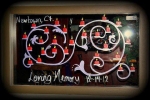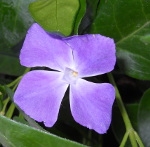Some basic tenets:
- Breathing is normally controlled by the chief by-product of respiration, carbon dioxide (although pH and oxygen can influence it as well);
- The pCO2 threshold to breathe increases a few mmHg during sleep;
- Consequently, breathing may be a little unstable during Sleep-Wake Transitions;
- There are a number of different centrals that could be considered "normal" phenomena, including Sleep-Onset Centrals, Post-Arousal Centrals and (Tonic) REM Centrals; and most important
- Despite its name, Sleepyhead does not know whether or not you are, in fact, asleep. Events are not scored in Wake during NPSG, so you could have done a thousand of those during the sleep study, but if they occurred during Wake, without looking at the raw data you would never know they existed.

shows totally disorganized breathing. One might see this if they were in the Sleep-Wake transition (drifting in and out of light sleep). ASV would not have an appreciable effect on this (although it might "pretty it up", shoving in waveforms where there are none)(but "normal" central events don't need to be "prettied up".)
Can you continue to blow it up, to some 60 second samples? There are more characteristics that need analysis (breath-by-breath). We'll probably need 30s as well.

















